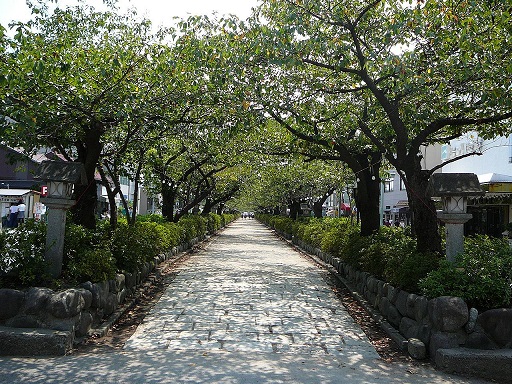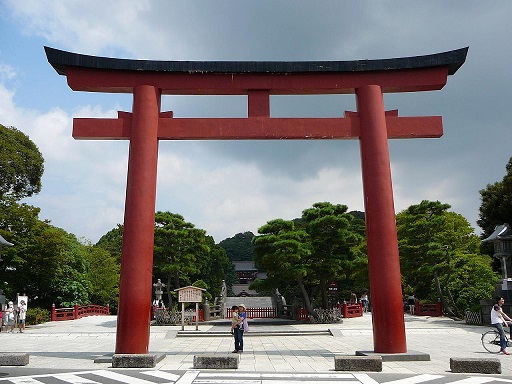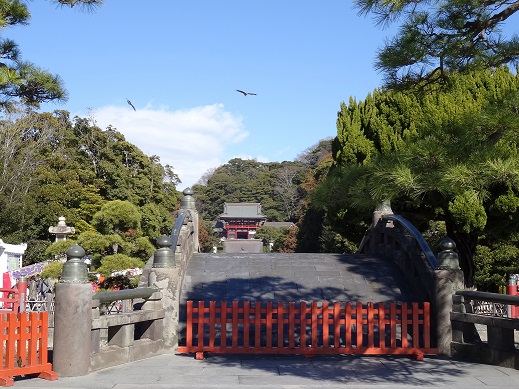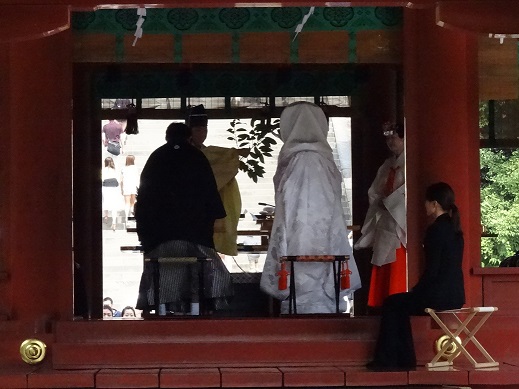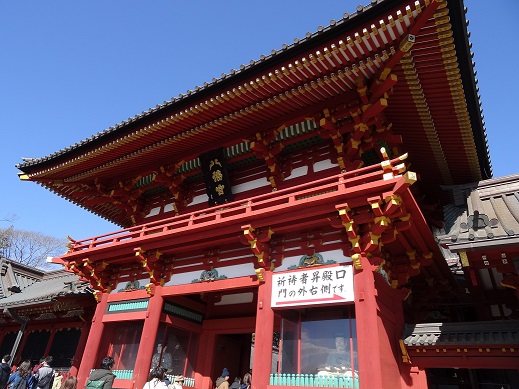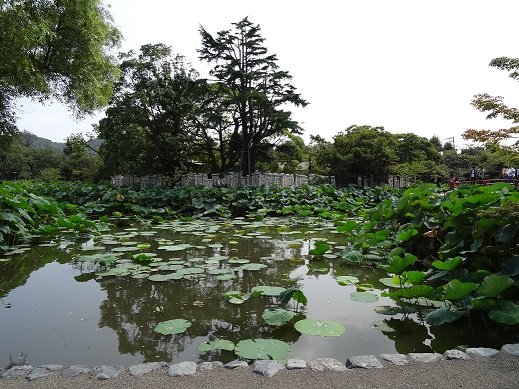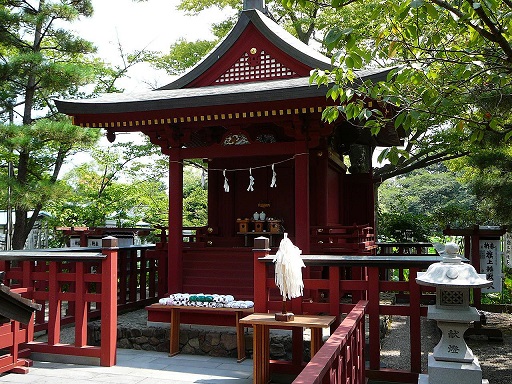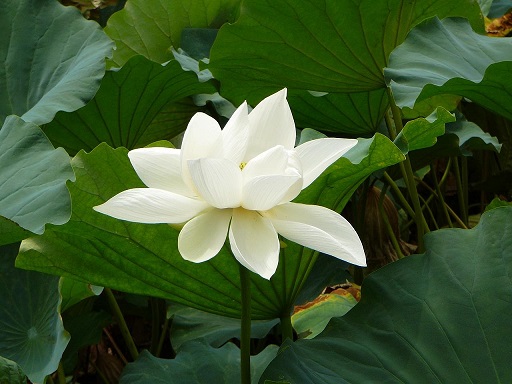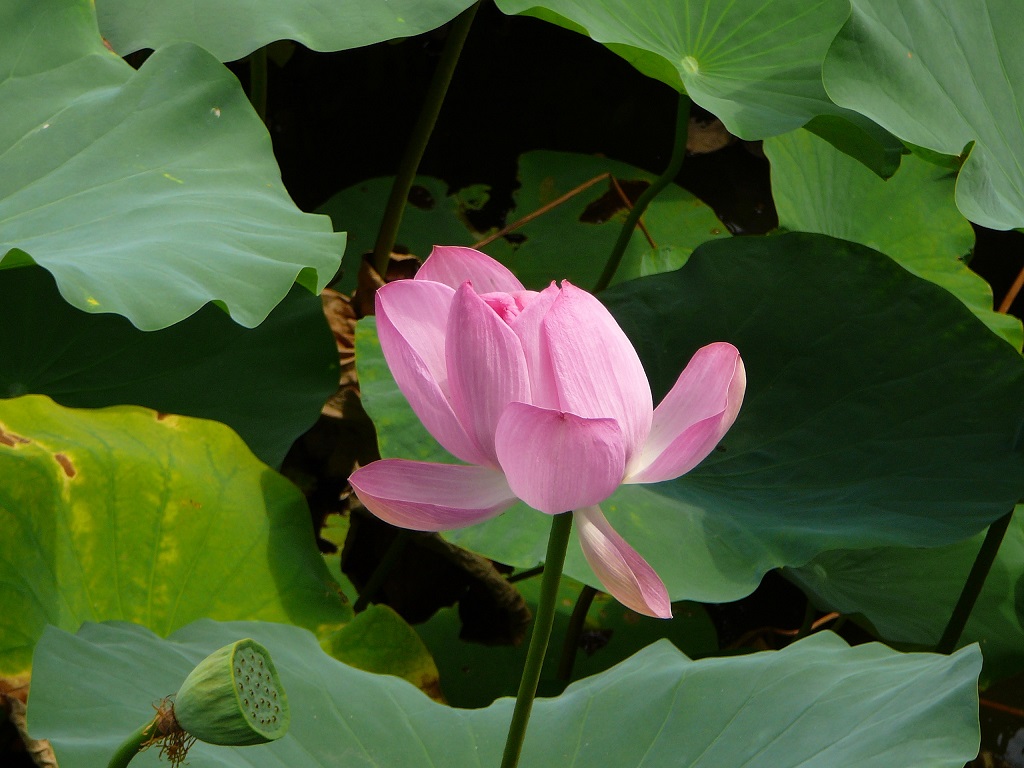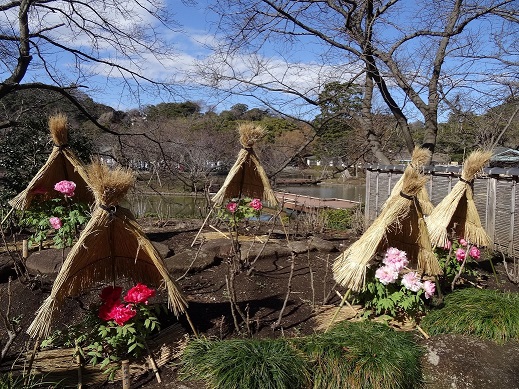|
Tsurugaoka-Hachiman-Gu Shrine
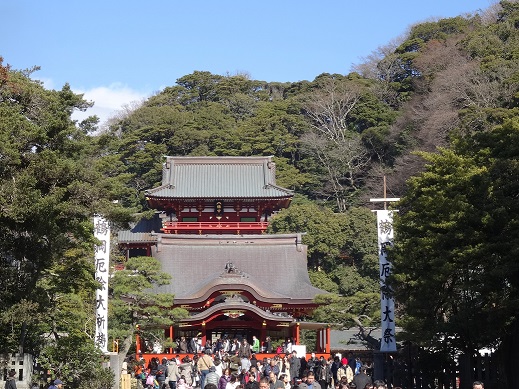
|
Tsurugaoka-Hachiman-Gu was the family shrine of the MINAMOTO Clan, and was built in 1063, by MINAMOTO-no Yoriyoshi. The MINAMOTO Clan was a major leader of Samurais in the later part of the Heian Age
(794 - 1185)
.
In 1185, MINAMOTO-no Yoritomo stablished the "Kamakura Bakufu", the central government of Japan and became the first "Shogun" of the "Kamakura Bakufu".
Tsurugaoka -Hachiman Shrine was located in the center of Kamakura and the government buildings were built near the shrine.
The main street, "Wakamiya-Oji", was built from the Tsurugaoka-Hachiman-Gu shrine to the south. The layout of the Tsurugaoka-Hachiman-Gu Shirine and "Wakamiya Odori" was referred to the layout of the Imperial Palace and the "Suzaki Oji Street in Kyoto.
|
CLICK HERE for the detailed explanation of the history related to Tsurugaoka-Hachiman-Gu Shrine
|
At the end of the
Heian Age
(794 - 1185)
, "Samurais" increased their political power against noble people who had been in a central role in the government of the imperial court during the
Heian Age. Among a couple of "Samurais", TAIRA Clan was another major leader of "Samurais".
Finally, TAIRA-no Kiyomori
(1118 - 1181)
, the head of the TAIRA clan, held the position of Daijodaijin (the grand minister of state) in 1167. Also, he let his daughter the princess of the Emperor TAKAKURA
(1161 - 1181)
.
However, TAIRA-no Kiyomori behaved as a noble person and used his power for his family's prosperity. Many "samurais" especially in the eastern Japan Area were against TAIRA Clan, called "Heishi" and supported MINAMOTO Clan, called "Genji".
"Genji" had battels against "Heishi" and destroyed "Heishi" at Dannoura Bay in Shimonoseki, Yamaguchi Prefecture. MINAMOTO-no Yoritomo, the leader of "Genji" opened his government in Kamakura and the
Kamakura Age
(1185 - 1333)
started. These things happened in 1185.
|
|
"Wakamiya-Oji" street still remains from Tsurugaoka-Hachiman-Gu Shrine to the south and at the middle of the street, there is "Dankazura" shown in the below picture.
"Dankazura" was built in the early 12th century for the easy delivery of HOJO Masako, the wife of MINAMOO-no Yoritomo.
If you walk on "Dankazura" to the north, you will see a huge red Torii gate.
This is the third Torii-gate of the shrine.
After passing through the third Torii-Gate, you will be in the area of Tsurugaoka-Hachiman-Gu Shrine.
The approach continues from the third Torii-Gate to the main shrine buildings.
At the middle of the approach, there is an arched stone bridge, "Taiko-bashi" Bridge, over the Gen-Pei pond. Currently, the "Taiko-bashi" Bridge is closed to the public.
|
|
From the approach, you will see the main shrine buildings on the hill. At the foot of the hill, a "Maiden" Hall, a Lower Worship Hall, is located. The "Maiden" Hall was built as the replacement of the original building when Tsurugaoka-Hachiman-Gu Shrine was founded.
When visited in September 2014, a wedding ceremony was held at the "Maiden" Hall. The shrine offers wedding ceremonies for the public.
In 1186, Shizuka Gozen, lover of MINAMOTO-no Yoshitsune, danced at this place by the order of MINAMOTO-no Yoritomo. MINAMOTO-no Yoshitsune was a young brother of Yoritomo and was the most distinguished contributor to the victory to destroy the "Heishi" clan in 1181. However, Yoritomo killed Yoshitsune.
Beyond the "Maiden" Hall, you will see steep stone steps to the main shrine buildings on a hill. In the past, there was a huge ginkgo tree in the middle of the steps.
The third "Shogun" MINAMOTO-no Sanetomo was assassinated at Tsurugaoka-Hachiman-Gu Shrine by Kugyo, cousin of Sanetomo on January 27, 1219. On the day of the assassination, Sanetomo visited the shrine and walked up the steps. Kugyo was behind the huge ginkgo tree and jumped on Sanetomo.
|
In January 2015
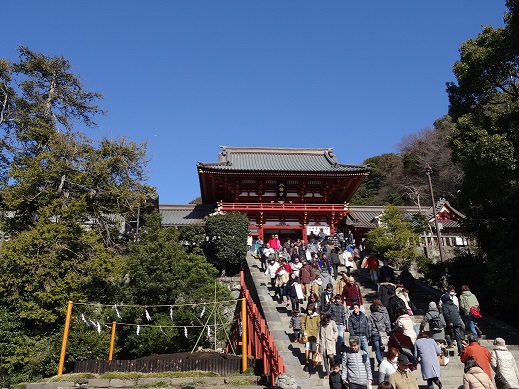
|
In August 2008
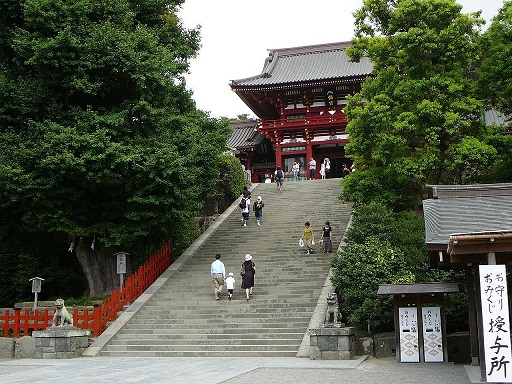
|
|
The huge ginkgo tree fell down on March 10, 2010 by strong wind. It is said the age of the tree was more than 1,000 years. The witness of the assassination which happened 800 years ago was lost.
After walking up the stone steps, you will arrive at a "Hongu", the Main Shrine Hall.
The current building was built in 1828 by TOKUGAWA Ienari, the eleventh "Shogun" of "Edo Bakufu".
The Main Shrine Hall is very gorgeous and well decorated. It is designated as an important property of Japan.
From the Main Shrine Hall, you will see Torii Gates and the Kamakura town beyond the Maiden Hall.
This view was also impressive.
After visiting the Main Shrine Hall, I visited "Gen-Pei" pond, located to the southeast of the shrine. "Gen-Pei" means both "Genji", MINAMOTO Clan, and "Heishi", TAIRA Clan. In summer, lotuses covered the water surface of the pond. You will see many white flags on an island in the pond.
On the island, Hata-age Benzaiten Shrine is located. The shrine building was re-built in 1980, but as the same design as the former building in the early 19th century.
The white flags are displayed at the shrine and the design of the flag is the same as the battel banner of MINAMOTO-no Yoritomo used for the battles against "Heishi". The symbol color of "Genji" was white and that of "Heishi" was red.
|
|
Both white and red lotus flowers were blooming.
In winter, you will see peony flowers on the southeast side of the "Genpei" pond. Usually peony flowers bloom in Spring, but a straw roof protects peony flowers against cold weather and you can enjoy to see peony flowers also in Winter.
Tsurugaoka-Hachiman-Gu Shrine is the symbolic place of the
Kamakura Age and it has long history and also historical events happened.
|
|
|
How to get there
From Tokyo, you will take a Yokosuka Line train or a Shonan-Shinjyuku Line bound for Zushi. Get off at Kamakura and take the east exit. You will soon reach to "Wakamiya Oji" street. Tsurugaoka-Hachiman-Gu Shrine is on your left.
Official English Site:
http://www.tsurugaoka-hachimangu.jp/
Other Historical Sites near by:
Kenchoji Temple
Grave of MINAMOTO-no Yoritomo
Kotokuin Temple
Shichiri-gahama Beach
|
|

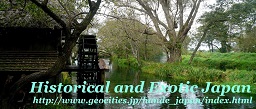 Home Page in Japanese: "Shane's HomePage"
Home Page in Japanese: "Shane's HomePage"
